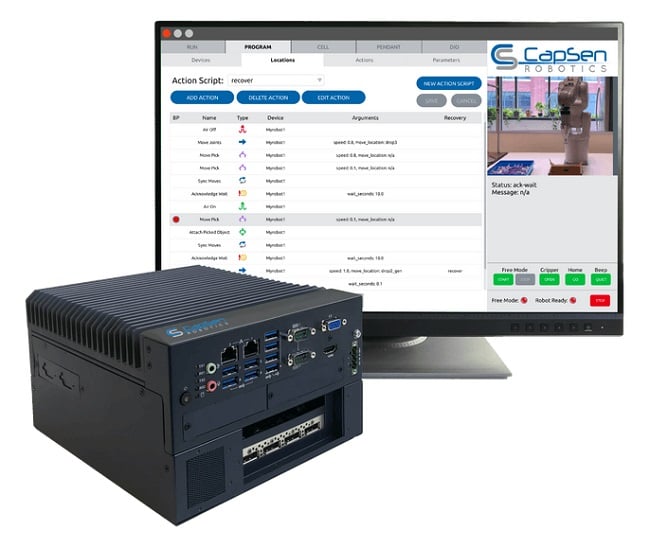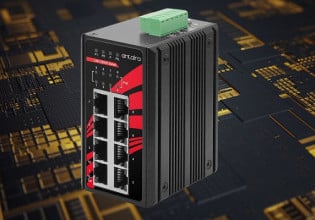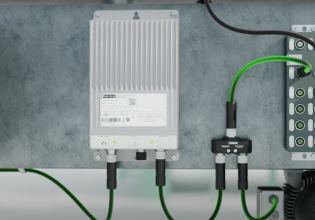Bin-Picking Software PiC 2.0 Now Available From CapSen Robotics
CapSen Robotics’ newest version of PiC software promises enhanced image analysis, part identification capabilities, and conformity to increasingly common hardware add-ons for pick-and-place robotics.
CapSen Robotics has released version 2.0 of the popular PiC bin-picking software. This new version is loaded with enhanced features that improve the user experience over the original version. The picking software performs each image analysis in under a second, competing for the top specs in the industry in terms of cycle time and the parts picking rate.
Challenges in Bin Picking
Bin-picking operations are common for machine loading, picking, packaging, and sorting of materials, sub-assemblies, and finished goods. The process can be imagined as a complex game of “pick-up sticks” where the robot must identify the location of the objects in a bin, select the best (or easiest) ones, and then move each item to its proper destination.

A robot selects and moves fasteners based on CapSen Robotics PiC 2.0. Image used courtesy of CapSen Robotics
In order for effective bin-picking to occur, machine vision and image processing algorithms must identify edges, hazards, potential collisions, and other problems that can occur.
Simply identifying parts is not enough; consider the robot that tries to grab the bottom tomato from a bin. It could potentially smash all of the tomatoes in its path to get to it. Another problem is objects with uneven weight distribution. Picking these items up from the wrong end could cause them to slide out of the grip, rotate in the grip, or apply too much pressure to the object. It is also possible to leave items in the bin that were never identified by the machine vision routine.

The new PiC 2.0 is operated on a hardened industrial computer. Image used courtesy of CapSen Robotics
What’s New in Version 2.0?
Right away, users will notice the new and improved user interface (UI) that is more intuitive. This version also has more advanced Artificial Intelligence (AI) routines that can help identify parts, even when they are heavily mixed with other components. These high-mix, low-volume picking operations often trip up machine vision systems, leaving behind parts or accidentally picking multiple parts up at a time.
Besides computational algorithms, the newest version makes use of a 3D vision system. The 3D system allows for better manipulation of objects, making it easier to identify objects and avoid collisions, even in densely packed bins and tight spaces.
A few specific improvements provide support for z-compliance devices, multiple and on-arm cameras, and moving linear rails for robots.
Use Cases for PiC
The PiC 2.0 software, combined with existing robotics systems, can be used for a variety of applications. CapSen Robotics suggested a few applications, but many more will benefit from the software. Everything from suture picking, where soft, sterile objects must be moved, to packing of components for shipping, where the software identifies the box or container edges, to metal hook disentanglement are made possible through this system.

A robot sorts a bin of chain hooks that are easily and unintentionally linked. Image used courtesy of CapSen Robotics
Advances in Bin-Picking Technology
At first glance, it would be easy to think that newer processing equipment will eventually eliminate the need for bin-picking, as all parts will be carefully laid out and ready for the next operation. However, this is not the case. There are far too many variables to accurately predict how gravity will affect the components; these pieces all might have varying weight, density, shape, or other properties that will create randomness when landing in the bin.
CapSen Robotics, with the release of the new PiC v2.0 software, aims to accelerate the process of identifying and picking objects in these complex and traditionally challenging situations.






